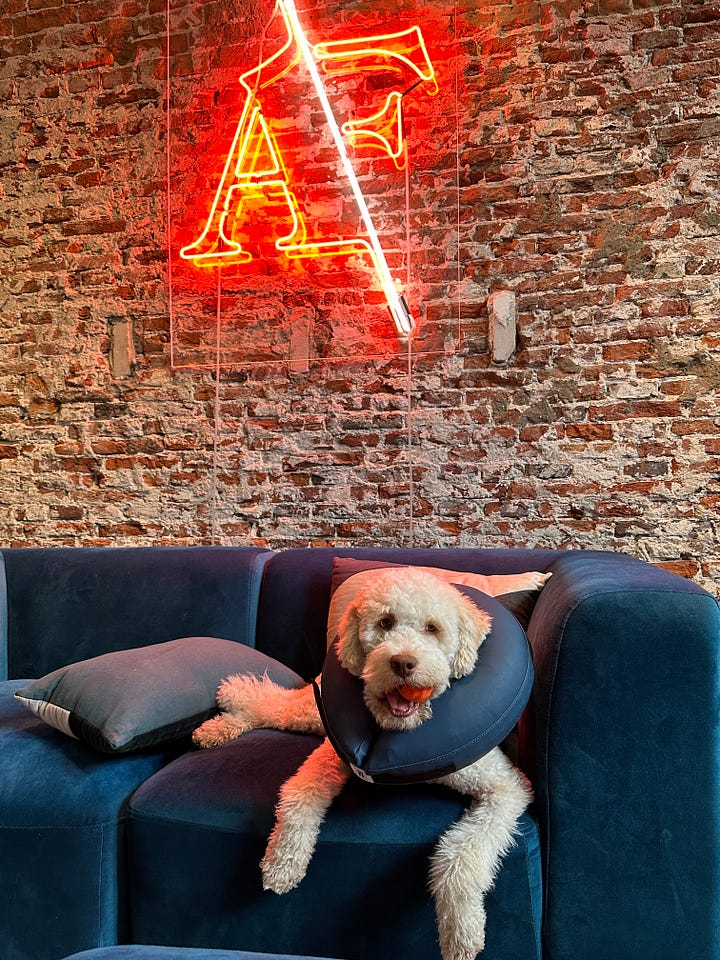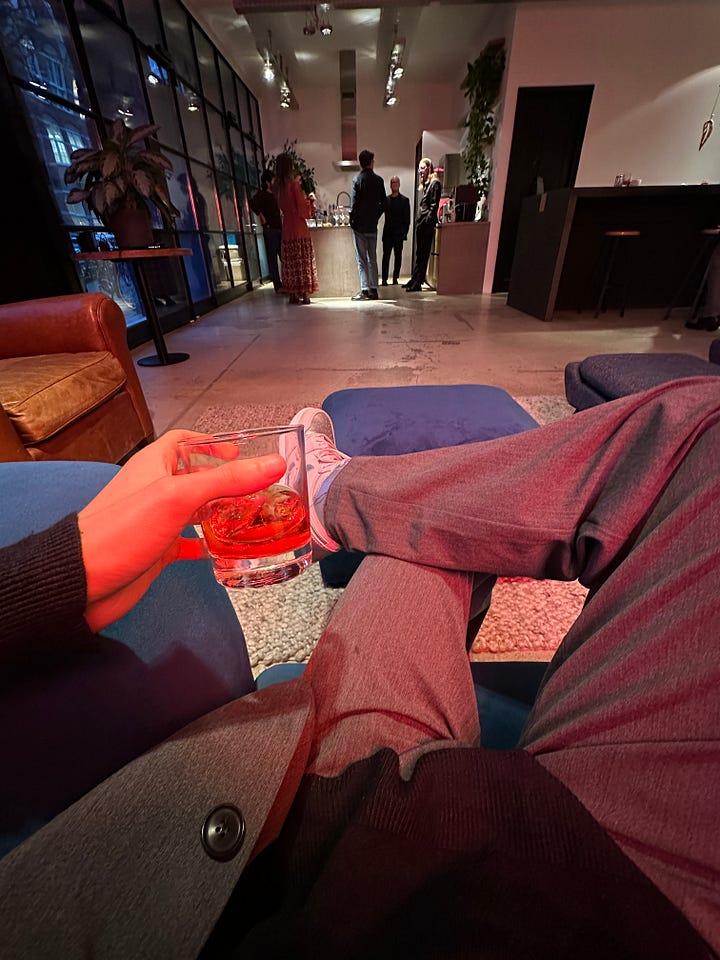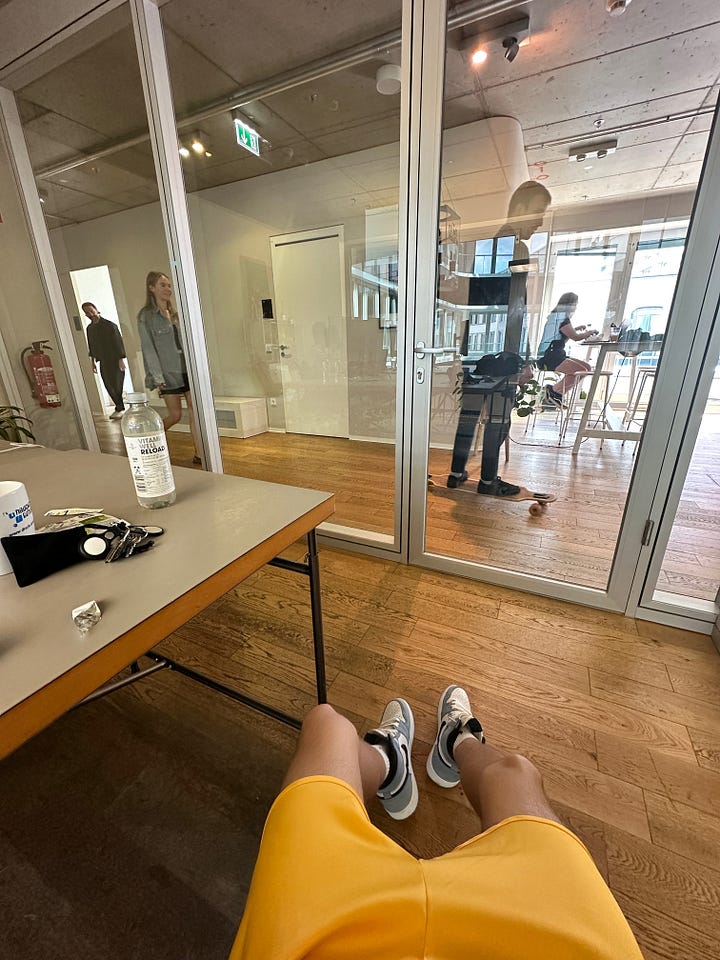Knowing whether you see yourself in a global network or a boutique shop can narrow your search. And while the difference might seem obvious there are a lot of considerations.


When you’re starting out you’re probably applying for both. Still, being able to picture what it’s like to work at either can help you visualize the direction you want to grow into.
BOUTIQUE AGENCIES
Smaller, typically specialize in certain types of work, like experiential marketing, branding, or digital campaigns, and cater to a more focused roster of clients. Agencies like Mother fall into this category.
Type of Work: Expect more creative freedom and a hands-on role in projects.
Structure: Flat hierarchies and smaller teams, you’ll wear multiple hats.
Workload: Fast-paced and unpredictable. You might juggle multiple roles, but that also means learning on the job and building a broader skill set.
You might find mismatched furniture and eclectic art on the walls. Small teams (especially me) on sofas or in the kitchen rather than in meeting rooms. On your first day, you’re introduced to literally everyone.
You might be thrown into the deep on your very first day. Like straight into the process. In your first week, you might already be in the middle of brainstorming taglines or thinking of activations. You’ll notice that as a creative, you need to be more versatile than you might have thought. You might have to do pitches for brands you don’t know much about and work on different executions.
Work and work structure: Project timelines and day-to-day meetings revolve more around client availability. In general, small agencies are often about pleasing the client and trying to grow relationships. While big agencies are in a good position to push back when client expectations are unrealistic or don’t align with the creative vision of the agency, smaller agencies are more afraid to do so. That means as a creative, you quickly need to learn to be vocal about what you can deliver and your vision without being too pushy. On the flip side, compared to bigger agencies, you’ll get a sense of how different clients tick and how different brands are structured.
In small agencies, there is often a lot of pitching, which allows bold thinking, but on the flip side, a lot of your thinking won’t get made. If something does get made, it’s super rewarding though, and being part of that pitch team ensures a lot of input or oversight when something goes into production. Pleasing the client means deadlines are tight, and priorities can shift by the hour. It can be exhausting but also exciting.
Team dynamics: Collaboration is constant and informal. You’ll often sit right next to the the ECD, and feedback is immediate and direct. You’re expected to contribute ideas and take ownership of your work, even if you’re new. Do well, and a promotion can come more quickly than in a big agency. At the same time, being passive will be noticed immediately.
Creative freedom: One of the perks is the freedom. A more out there idea, chances are, you’ll get to run with it, at least until the client weighs in. Small agencies often lean on more experimental thinking or thinking that is more tapped into the culture to set themselves apart from their global competitors. As a more junior creative, your ideas have a good chance of making it into final presentations, and maybe you’ll even get to present them to the client. Copy and art director relationships are especially tight in smaller agencies, and often, you will have already applied together.
Challenges: Out-of-the-box thinking is somewhat expected, and if you don’t like a brief, you don’t have the luxury to lay low. Resources are limited, and the variety of tasks can feel overwhelming. You’re not just a copywriter; some days, you’re also a strategist or need to help the art director find visuals. But the payoff can be to see your fingerprint in everything.
After-work culture: Integrating into the team and even joining after-work activities are important. Even when not expected, not being there will not go unnoticed. In general, this is a great opportunity to get to know people, but also the different responsibilities within an agency. The line between work and play often blurs.


GLOBAL NETWORK AGENCIES
Agencies like Ogilvy, TBWA, etc. They have offices around the globe and handle some of the biggest brands.
Type of Work: Large-scale campaigns for big-name clients like Coca-Cola or Nike. Multi-million-dollar budgets, global teams, and a sharp focus on brand consistency.
Structure: Highly organized with clear hierarchies and specialized roles. You’ll likely be part of a team that focuses on a specific aspect of the campaign.
Workload: While the work is often structured, it can be intense. Long hours aren’t uncommon, especially leading up to major deadlines.
When I moved to AKQA, I immediately felt how everything was a bit more organised. Still, the Berlin office particularly gave me a very homely feel, the team being smaller compared to other offices like Copenhagen, Amsterdam, or Paris. AKQA does everything from entire campaigns, including films, to more specialized projects like the digital part. Also, they are part of WPP, the group that also owns agencies such as Grey, Ogilvy or VML. Collaboration happens seamlessly within AKQA but also across these agencies.


Wieden+Kennedy Amsterdam, where I interned before AnalogFolk, has the vibe of a smaller agency, but actually, the office in Amsterdam is much bigger than AKQA Berlin. It’s definitely an agency with global reach that deliberately tries to give off this boutique feel, so it was an interesting in-between to experience as an intern. It was clear that W+K’s focus on storytelling shaped everything they did.


First impressions: Your first day starts with HR. Your entire first week might be dedicated to your onboarding, which goes beyond getting your laptop and logging in.



